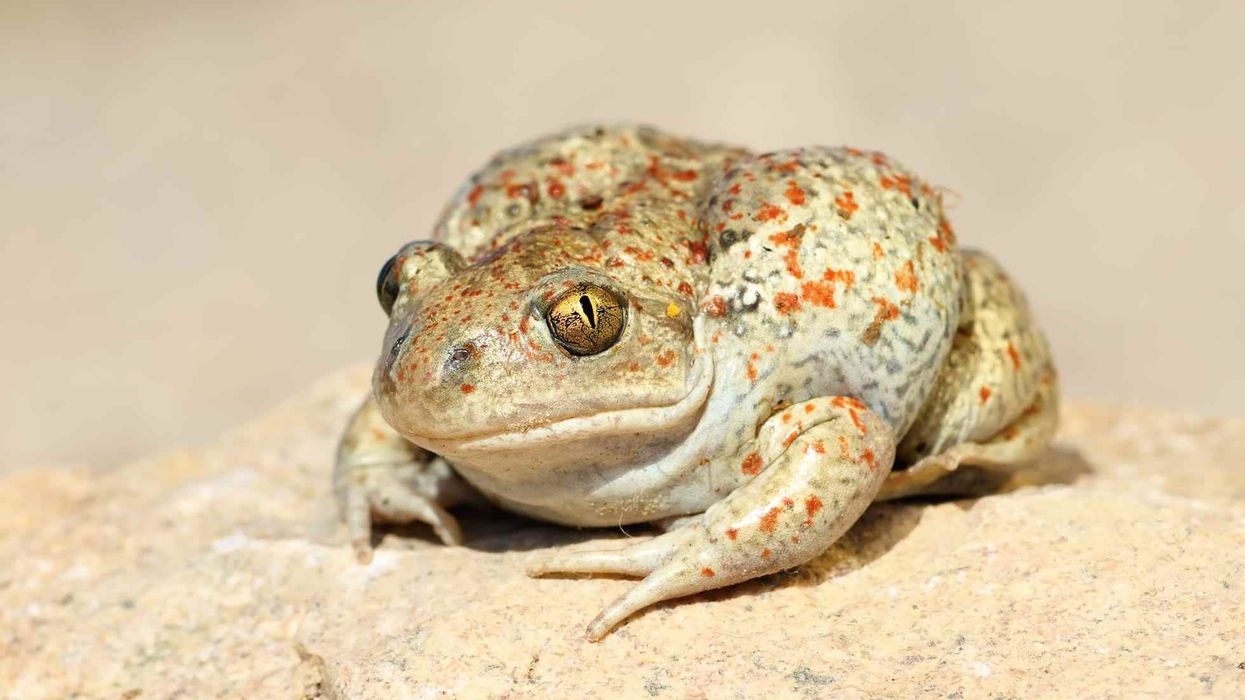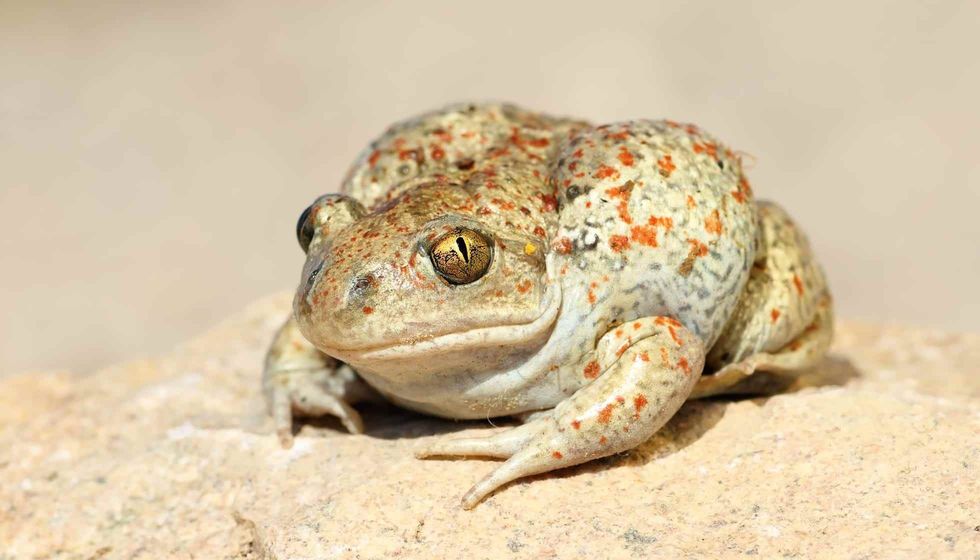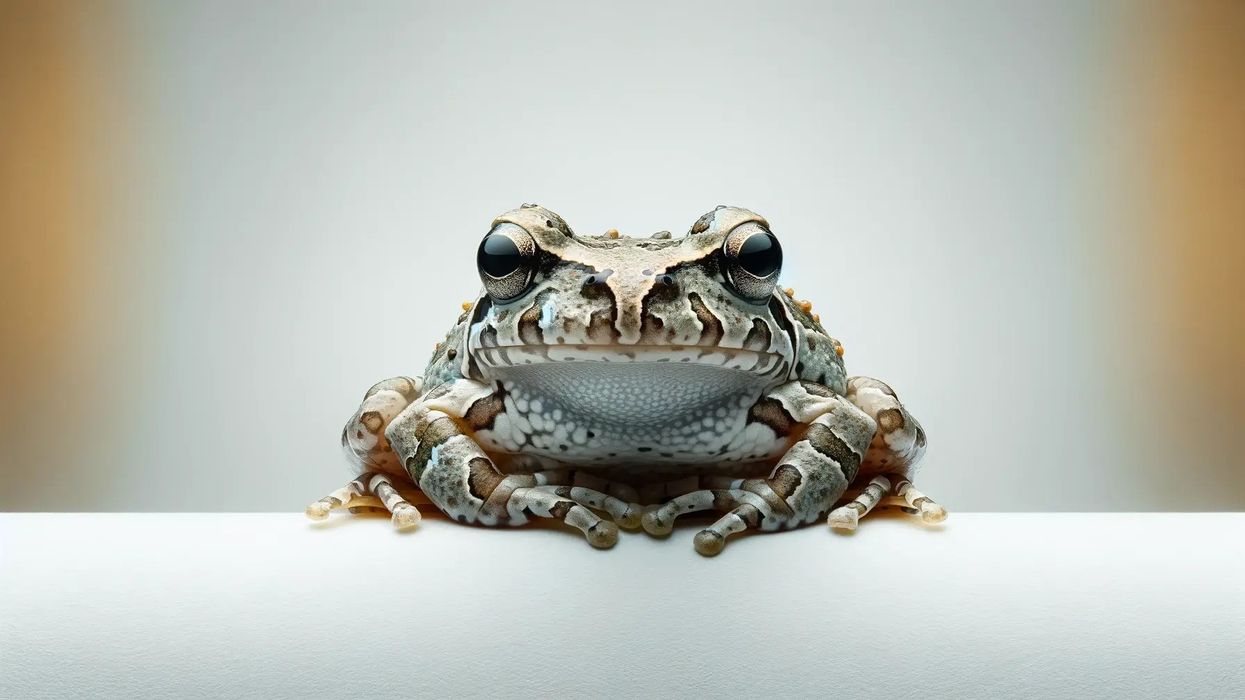Are you looking for Eastern Spadefoot toad facts for kids? One of the most unique species in toads and frogs is the Spadefoot Toad (Pelobates fuscus).
They are found all across the western hemisphere.
The Spadefoots are known for their variable tadpole cycle, and as the name suggests, their spade-like foot helps them burrow into the ground in times of drought. We bring to you the comprehensive guide to almost all the Spadefoots out there, such as Western Spadefoot Toad facts, Great Basin Spadefoot Toads facts, Eastern Spadefoot Toad facts, and more!
The Western and Eastern Spadefoot Toads are the most well-known of the Spadefoots, with their tadpoles evolving into toads in less than three weeks. Did you know that these toads, when threatened, release an enzyme that smells like peanut butter?
Read on to know more interesting facts about this animal and do check out sand lizard facts and Natterjack toad.
Spadefoot Toad Interesting Facts
What type of animal is a Spadefoot Toad?
The American Spadefoot Toads are a species of toad.
What class of animal does a Spadefoot Toad belong to?
The American Spadefoot toads, like all other toads, belong to the amphibian class.
How many Spadefoot Toads are there in the world?
Due to a lack of research, the population size of the Spadefoot toads breed across the world is unknown. Since most tadpoles do not make it to adulthood, it complicates the tabulation process further.
Where does a Spadefoot Toad live?
Since they are amphibians, they are mostly found in and around wetlands. Places such as North America are the perfect habitat for the Spadefoots. They thrive in damp, marshy areas with plenty of places for their tadpoles to grow.
What is a Spadefoot Toad's habitat?
The American Spadefoots are usually found in swamps where there is a lot of heavy rains, water, mud, and space to move around. This habitat also presents the perfect place for breeding and laying eggs. North America and the northern portion of Canada and the United States is usually where you can expect to find this species.
Who do Spadefoot Toads live with?
The Spadefoot Toads breed is not big on company and are usually found living by themselves. They are not territorial, but still prefer a solitary life as opposed to community living. If this species is threatened, they will make noises to ward off enemies.
How long does a Spadefoot Toad live?
The Spadefoot Toads can live up to ten years in the wild. Some, such as the Eastern Spadefoot, can spend their entire life underground!
However, in captivity, their lifespan decreases to a little under five years on average.
This is because they can not adapt to human spaces, and as a result, fall prey to a host of diseases. As such this species, and Spadefoots in general, are not considered ideal to keep as a pet or in our homes, simply because they won't survive long enough to enjoy it!
How do they reproduce?
The Spadefoot Toads reproduce by breeding near water and laying eggs in the water, where they undergo complete metamorphosis. The cycle can take anywhere from one to three weeks, depending on the availability of water.
If there is less water, the Spadefoots' eggs will develop faster and become tadpoles at a quicker rate. Did you know that even as eggs, the Spadefoot tadpoles will eat plankton and other organisms for nutrition?
What is their conservation status?
Since there is not enough research on the Spadefoot, they are assigned the Least Concerned status. However, some scientists have been contesting this claim, maintaining that the Eastern Spadefoot and the Great Basin Spadefoot should be shifted into the Endangered category.
Spadefoot Toad Fun Facts
What do Spadefoot Toads look like?
The Spadefoot Toads are small, round toads with green-yellow, brown splotches all over their frame. They have vertical pupils in yellow eyes and have a small, keratinous bone in their hind feet, which helps them dig into the ground.
They also move with hops and jumps and have webbed feet to help them swim in the water. They also have small "ears" which are very difficult to see.

How cute are they?
With their yellow eyes, vertical pupils, and small size, they are not cute at all. These characteristics make them fit to live in the wild, and as a result, they will not thrive indoors.
How do they communicate?
They are not very loud creatures. The Spadefoot Toad communicates with a call that sounds like a "waah." They can increase and decrease the pitch and volume depending on the message they wish to convey.
How big is a Spadefoot Toad?
The Spadefoot Toad is about 2-3 in, half the size of a common toad, which comes in at around 6 in.
How fast can a Spadefoot Toad move?
The Western Spadefoot moves too slowly to be recognizable on any speed scale.
How much does a Spadefoot Toad weigh?
The Western Spadefoot weighs in at around 50-100 g.
What are their male and female names of the species?
There is no specific name for the male or the female Spadefoot.
What would you call a baby Spadefoot Toad?
A baby Spadefoot does not have a specific name as such. But baby toads are generally called tadpoles.
What do they eat?
The Spadefoots have a very varied diet, mostly carnivorous in nature. They eat creatures like crickets, flies, moths, caterpillars, centipedes, and more.
Are they poisonous?
Is the Western Spadefoot Toad poisonous? Probably not. But they do secrete a special enzyme when threatened, which can lead to allergic reactions when touched. So, it is a good idea to stay away from them in general.
Would they make a good pet?
It is not a good idea to have this species as a pet. Not only are they potentially allergic, but they also are not meant to be kept in captivity - this species and other species such as the Great Basin Spadefoot.
Couch's Spadefoot Toad and the New Mexico Spadefoot are incapable of surviving too long in human homes and spaces.
Did you know...
One of the fun Desert Spadefoot Toad facts might be that they can burrow underground for up to 10 years with the help of their nifty hind foot.
The Spadefoot species, in general, burrows into the ground in search of water. They stay down there until there is enough water on the surface for them to come to the top again.
Their breeding process and that of laying eggs are fully dependent on the rains, so until there are heavy rains in their habitat, there is no reason for them to come to the top again.
Naming the Spadefoot Toad
The Spadefoots, and the entire species, get its name because of a bone in their hind foot. This bone is made of keratin and allows them to dig holes in the ground.
Thus the name "Spade - foot" (a foot like a spade). They are then subdivided into subspecies based on their geographic locations. While we are only discussing the American Spadefoot Toad, also called the Western Spadefoot toad, many others are around like species such as the Eastern Spadefoot toad, the Plains Spadefoot, and more.
Sounds of the Spadefoot Toads
The Spadefoots do not have a boisterous temperament. Though they prefer to stay alone, for the most part, they communicate via small noises which sound like the word "waah." They can do this to warn fellow toads of danger, impress potential mates for breeding, and scare away enemies and other toads.
Here at Kidadl, we have carefully created lots of interesting family-friendly animal facts for everyone to discover! Learn more about some other amphibians including common toad, or marine toad.
You can even occupy yourself at home by drawing one on our spadefoot toad coloring pages.









